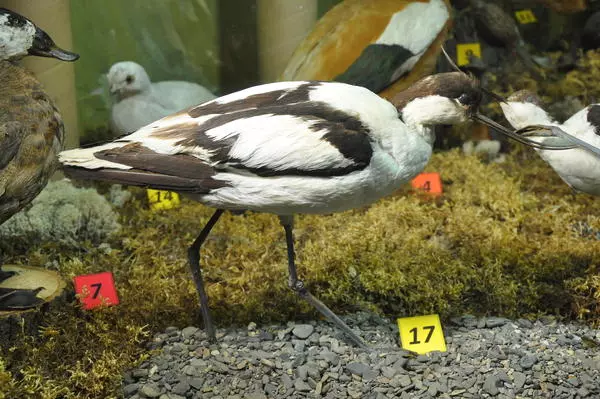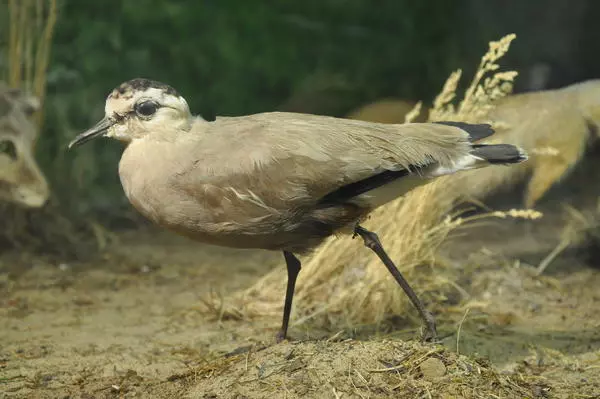Lynxes belong to the Mammalia class, the CarnIvora order, the Felidae family, and the Felinae subfamily. The Urals is home to the Eurasian or Siberian lynx.
The lynx has an average body length of 80 to 130 centimeters, a wither’s height of 50 to 70 centimeters, and a weight of 18 to 35 kilos. Its body is short and robust, with long tuffs on the ears. The tail is short, 20 to 40 centimeters on average, with a “docked” end. The elongated hairs on the sides of the lynx’s face form ‘sideburns.’ The face is short, and the eyes are wide and have round pupils.
Lynxes shed twice a year: in spring and autumn. They have a very thick fur that ranges in color from reddish-brown to smoky-pale, with more or less pronounced spots on the back, sides, and legs. The fur on their bellies is white and slightly specked. Their big paws become hairy in winter, which allows them to walk on the snow without falling through.
The lynx is the northernmost predator from the Felidae family. In Scandinavia, it is found even beyond the Arctic Circle. Lynxes inhabited almost all of Europe in ancient times, but were exterminated in most countries by the middle of the 20th century.
In the Southern Urals, the lynx is found up to the border of coniferous forests and sometimes the forest steppe, but it is still very rare even in the mountain forests.
The lynx is a great climber when it comes to trees and rocks, an it is also a good swimmer. It moves freely on the snow. Its spotted fur makes it invisible during the day among the flecks of sunlight reflected from the tree crowns and hides it at dusk and dawn, making it easier to attack the prey.
The lynx prefers to stay in one place if it has enough food and roams from one area to another when food is scarce. It can cover up to 30 km a day. The mountain hare forms the core of the lynx’s diet. It also constantly hunts grouses and small rodents, sometimes preys on hoofed animals like roe deer, and occasionally attacks domestic cats and dogs, foxes, raccoon dogs, and other small animals. The lynx hunts at dusk. It prefers to attack its prey from an ambush, jumping at it from a distance of up to four meters. It can chase its prey for no more than 60–80 meters before it gets tired. Lynxes cover the half-eaten remains of their prey with snow or soil, but they do it so carelessly that the stashed food quickly gets stolen by smaller predators.
The lynx has an average body length of 80 to 130 centimeters, a wither’s height of 50 to 70 centimeters, and a weight of 18 to 35 kilos. Its body is short and robust, with long tuffs on the ears. The tail is short, 20 to 40 centimeters on average, with a “docked” end. The elongated hairs on the sides of the lynx’s face form ‘sideburns.’ The face is short, and the eyes are wide and have round pupils.
Lynxes shed twice a year: in spring and autumn. They have a very thick fur that ranges in color from reddish-brown to smoky-pale, with more or less pronounced spots on the back, sides, and legs. The fur on their bellies is white and slightly specked. Their big paws become hairy in winter, which allows them to walk on the snow without falling through.
The lynx is the northernmost predator from the Felidae family. In Scandinavia, it is found even beyond the Arctic Circle. Lynxes inhabited almost all of Europe in ancient times, but were exterminated in most countries by the middle of the 20th century.
In the Southern Urals, the lynx is found up to the border of coniferous forests and sometimes the forest steppe, but it is still very rare even in the mountain forests.
The lynx is a great climber when it comes to trees and rocks, an it is also a good swimmer. It moves freely on the snow. Its spotted fur makes it invisible during the day among the flecks of sunlight reflected from the tree crowns and hides it at dusk and dawn, making it easier to attack the prey.
The lynx prefers to stay in one place if it has enough food and roams from one area to another when food is scarce. It can cover up to 30 km a day. The mountain hare forms the core of the lynx’s diet. It also constantly hunts grouses and small rodents, sometimes preys on hoofed animals like roe deer, and occasionally attacks domestic cats and dogs, foxes, raccoon dogs, and other small animals. The lynx hunts at dusk. It prefers to attack its prey from an ambush, jumping at it from a distance of up to four meters. It can chase its prey for no more than 60–80 meters before it gets tired. Lynxes cover the half-eaten remains of their prey with snow or soil, but they do it so carelessly that the stashed food quickly gets stolen by smaller predators.






